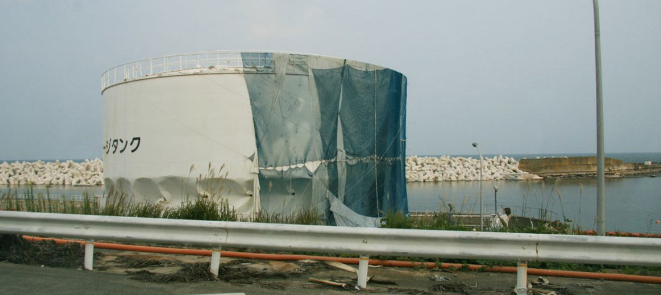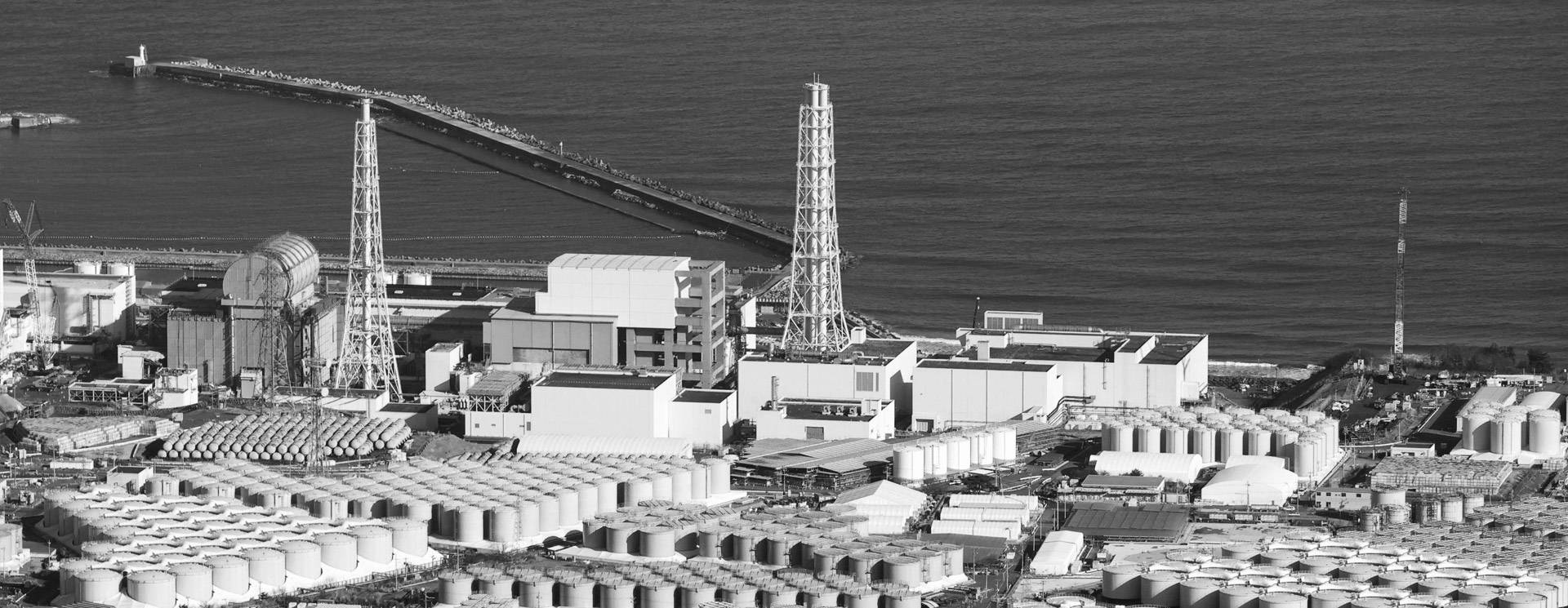
IAEA/Giovanni Verlini | A storage tank at the Fukushima Daiichi Nuclear Power Plant.
January 30, 2024 | Climate change and the environmen
The International Atomic Energy Agency (IAEA) task force today released its first full report since Japan officially implemented Japan's plan to discharge treated water from the Fukushima Daiichi nuclear power plant into the sea last year. Based on the Working Group's observations, the discharge work was found to be in line with international safety standards, which also confirms the conclusions reached by the IAEA in its comprehensive report on the safety review released on 4 July last year.
Last year, prior to the start of the discharge process, the IAEA released a comprehensive report on safety reviews that concluded that Japan's plans and activities for discharging ALPS-treated water were in compliance with relevant international safety standards, and that the planned discharge of treated water into the sea would have negligible radiological effects on people and the environment.
Review of mission visits
Japan began implementing its drainage plan on August 24 last year, and has so far completed three batches of 23,400 cubic meters of treated water. The Task Force conducted a working visit to Japan from 24 to 27 October last year to review the facilities and equipment installed at the Fukushima Daiichi Nuclear Power Plant for the discharge of ALPS-treated water, and met with the plant's operator, Tokyo Electric Power Company (TEPCO), the Ministry of Economy, Trade and Industry (METI) and the Nuclear Regulation Commission (NRA).
Based on the assessments made during the visit, the Task Force also concluded the following:
Japan has established a strong regulatory mechanism to provide operational-level safety oversight of the discharge of treated water from advanced liquid handling systems. The working group was able to see the NRA present at the discharge site and carry out related monitoring activities.
Based on observations at the Fukushima Daiichi Nuclear Power Station, the Working Group confirmed that the drainage equipment and facilities were installed and operated in a manner consistent with the drainage plan developed by Japan and in compliance with relevant international safety standards.
The Working Group also reiterated the conclusion of last year's comprehensive safety review report that conservation optimization is a process of determining the level of individual protection and safety that needs to be included in the overall planning for the decommissioning of the Fukushima Daiichi nuclear power plant. However, the Working Group is fully aware that drainage activities are still in their early stages and that more time and operational experience will be needed to make progress in conservation optimization.
As part of its ongoing multi-year safety review, the IAEA will continue to conduct review missions. At the same time, the IAEA maintains a presence at the Fukushima Daiichi nuclear power plant site to continuously monitor and assess the discharge situation.
Validation of measurement data
The IAEA has also issued two separate reports on the verification of drainage measurement data. The verification of the measurement data is part of a safety review of the water and supports Japan's plan to discharge the treated water from the Advanced Liquid Handling System.
The IAEA is conducting a series of inter-laboratory comparative analyses to verify the source and environmental monitoring of ALPS-treated water discharges by TEPCO and other relevant Japanese authorities. In accordance with the relevant IAEA international safety standards, TEPCO must monitor the characteristics and activity of the treated water in order to accurately assess any radiation effects of the discharge on the public and to ensure compliance with regulatory approvals made by the Nuclear Regulation Commission of Japan.
The first report describes an interlaboratory comparative analysis to assess TEPCO's ability to "accurately and finely" measure the radionuclides present in the treated water stored at the nuclear power plant. The treated water samples used in this analysis were taken from two storage tanks at the Fukushima Daiichi Nuclear Power Plant in October 2022.
In the second report, the IAEA details radionuclide comparison analysis of seawater, sediment, fish and seaweed samples, which were collected in November 2022 from offshore sites and from a fish market near the Fukushima Daiichi Nuclear Power Station. This work was carried out prior to the commencement of the drainage to validate the monitoring aimed at establishing a baseline for active concentrations in the marine environment, which would allow any future impacts of the drainage to be measured.
Entities involved in the inter-laboratory comparative analysis include laboratories in the IAEA's Division of Nuclear Sciences and Applications, an external laboratory in South Korea, and several laboratories in Japan. Samples are analysed separately by each laboratory, and the results are quantitatively compared by the IAEA.
According to the IAEA, the results of the two inter-laboratory comparative analyses show that Japan can be trusted to carry out accurate and detailed measurements of the discharge of ALPS-treated water. Next, inter-laboratory comparisons of treated water, environmental samples, and occupational radiation protection will continue.
Security reviews based on global reference standards
In April 2021, Japan announced its basic policy on the disposal of ALPS-treated water stored at the Fukushima Daiichi Nuclear Power Plant by discharging ALPS-treated water into the sea around the nuclear power plant after approval by domestic regulators.
Shortly thereafter, the Japanese authorities requested technical assistance from the IAEA to monitor and review these plans and activities related to the discharge of ALPS-treated water to ensure that they are implemented in a safe and transparent manner.
Following this request, IAEA Director General Grossi appointed a task force that year, consisting of IAEA staff and 11 internationally recognized experts with extensive experience and extensive technical expertise from Argentina, Australia, Canada, China, France, the Marshall Islands, South Korea, Russia, the United Kingdom, the United States and Viet Nam.
The Working Group reviewed the safety of Japan's plan to dispose of stored water at the Fukushima Daiichi Nuclear Power Plant against international safety standards, which constitute a global reference standard for the protection of the public and the environment from the harmful effects of ionizing radiation.
The content is source: the official website of the United Nations
If there is any infringement, please contact to delete!
